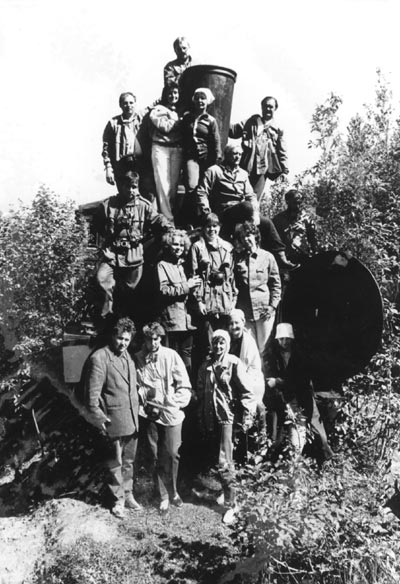









On the 9 of January 1949 the Counsil of Ministers passed the Decree about the construction of a seaport near Igarka, right at the estuary of the Yenisey, as well as the laying of a railroad line from Salekahrd to Igarka covering a distance of 1300 kilometers. The building of the railroad line was incumbent on the NKVD USSR, which organized two main construction administrations: Obsk N° 501 with its center in Salekhard (building of the line from the west up to the river Pur) and Yeniseysk N° 503, which, at first, had its headquarters in Igarka and later in the settlement of Yermakovo (section from the river Pur up to Igarka).
Upon the beginning of navigation in the spring of 1949 the number of prisoners forming the special contingents (this is how they were officially called) amounted to about 70000. All along the line, every 5-7 kilometers, there were camps, where they kept between 500 to 1500 inmates – half of them had been sentenced on political sections.
The entire railroad line was to be built beyond the polar circle. Camp regime and rough climate – thawing swamps, mosquitos and blackflies during the summer, huge snowdrifts and frost with temperatures up to minus 50 degrees, gave the prisoners an extremely hard time at work. But the Soviet administration was in a hurry, and the prisoners managed to lay up to 15 kilometers of track per month.
After Stalin’s death the government of the USSR decided to stop the building of the railroad line on the 25 March 1953. The very last prisoners were removed from the construction sites in 1955.
Vladimir Sirotinin
Chairman of the Krasnoyarsk “Memorial” Organization
